Climbing is one of the most loved outdoor activities due to its great benefits and physical and mental challenges. There are various types of climbing that you can do according to your level of expertise and experience, ranging from traditional to climbing gyms.
That’s why it’s best to understand what kind of rock climbing you want to do first before making decisions on which gear to use. If you want basic tips for rock climbing for beginners, then worry less as here are some things you can consider to help you increase your knowledge about rock climbing.
Table of Contents
The Most Rock Climbing Tips For Beginners
1. Good gear will last longer
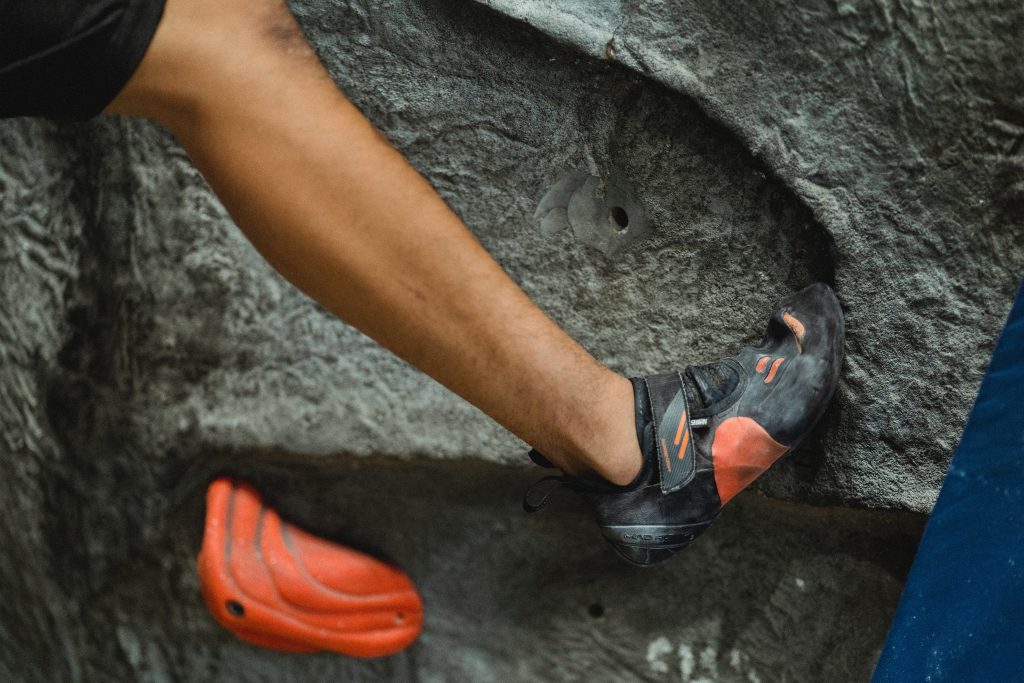
Rock climbing is a great way to get outdoors and get your heart pumping. It’s also a lot of fun, whether you’re just starting out or have been climbing for years.
When you first start out, you might be tempted to buy all sorts of gear. But before you go out and buy everything under the sun, here are some rock climbing tips for beginners to help you get started:
Invest in good quality climbing gear.
Good gear will last longer than cheap gear and will be safer to use. If you’re just getting started, it’s best to buy one or two essentials at first, then add more gear as needed.
Make sure that what you buy will fit well and be comfortable enough for long climbs (or routes). You don’t want anything that will cause chafing or irritate sensitive parts of your body — especially if you plan on going rock climbing multiple times per week or month!
But Avoid Buying Gear You Don’t Yet Need. The most important thing when buying new gear is making sure it matches the type of climbing you plan on doing most often.
Get the right fitting shoes.
Climbing shoes are very important for your safety and comfort while climbing. They are different from regular shoes because they have sticky rubber soles which make it easy for you to grip onto rocks or walls without slipping off them easily. You should try on several pairs of shoes before deciding on one pair because not all brands fit everyone equally well!
The next thing to consider is safety gear such as harnesses and helmets. These items should also fit well so that they don’t restrict movement during climbing or fall. The helmet should be comfortable and secure on your head without being too heavy or bulky.
Other important accessories include chalk bags, chalk balls, belay devices, and carabiners (metal loops used to attach ropes). Don’t skimp on these items because they could save your life if something goes wrong while climbing!
Related: How to choose climbing shoes
Related: 5 Best Bouldering Shoes
2. You need proper instruction
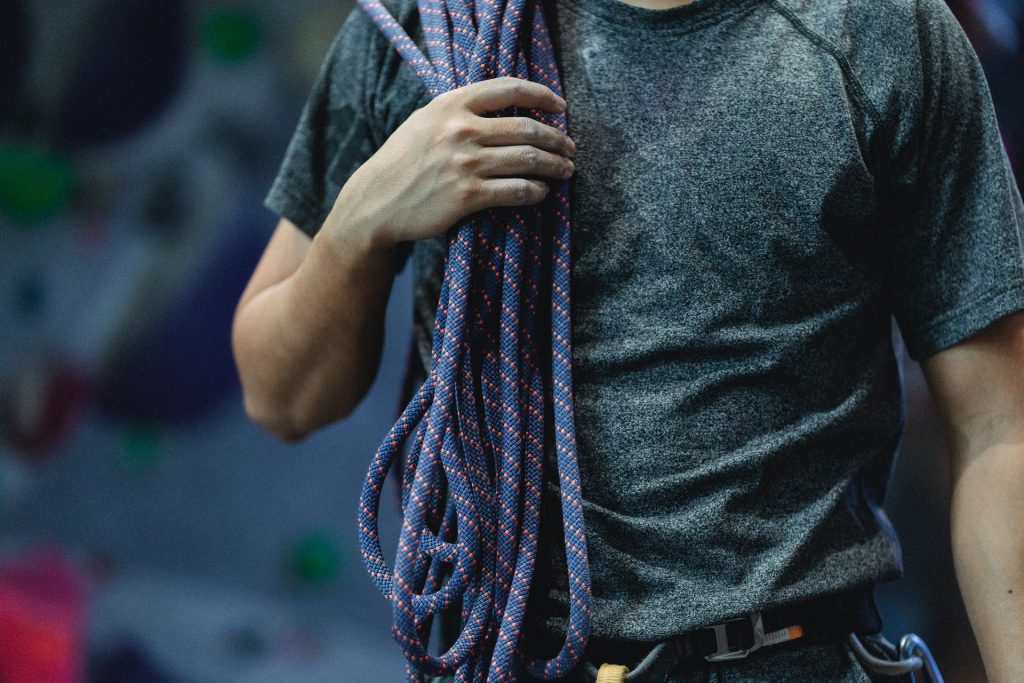
Before you head out for your first rock climbing experience, make sure you take some time to learn the basics. Here are some of the most important rock climbing tips for beginners:
Get proper instruction.
Rock climbing is not like other sports where you can just pick up a ball and start tossing it around or running on a track without any training. You need proper instruction before you start scaling any rocks. That way, you can learn how to use the equipment properly and get a feel for what it feels like to be on the wall.
There are so many new techniques to learn — from belaying (securing) your rope partner so he doesn’t fall off the wall to basic safety precautions — that having someone who knows his stuff shows you how it all works is invaluable.
Find someone to train with who’s a qualified rock climbing instructor.. Many gyms offer beginner classes that will teach you everything you need to know about rock climbing, including knot tying, equipment use, basic safety precautions
Related: How to Get Better at Climbing
3. Find a partner
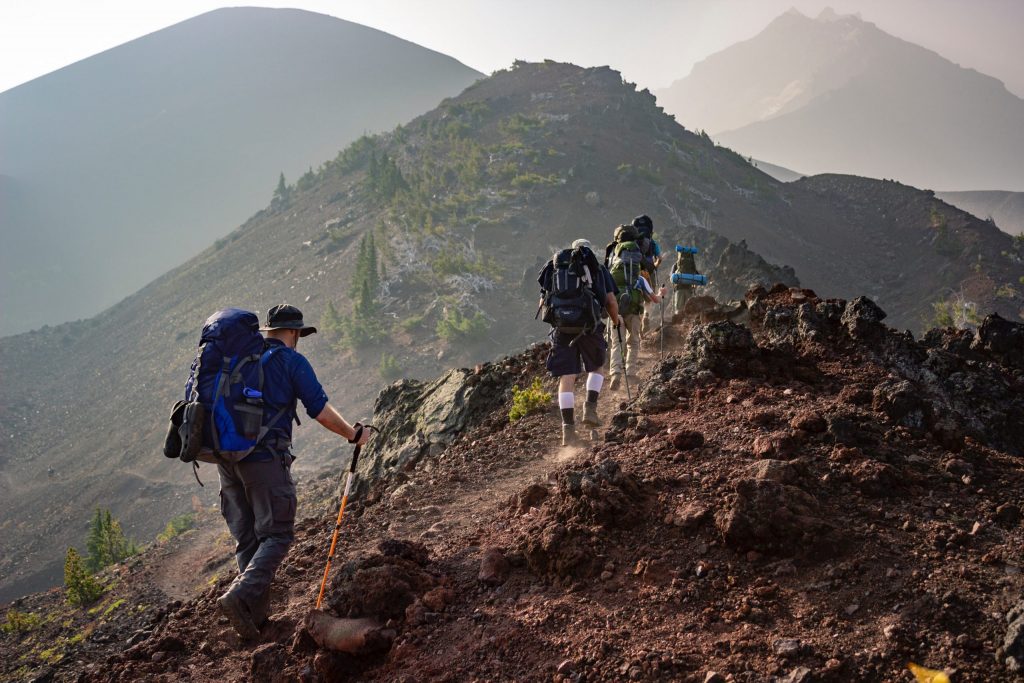
Climbing partners can be family members or friends who are willing to take time out of their busy schedules just for you. You will need someone who understands what motivates you as well as someone with whom you feel comfortable sharing your achievements and setbacks.
Having a trusted partner will help keep each other safe while climbing outdoors or indoors in a gym environment because they will be able to spot any problems before they become serious incidents that could result in injury or death.
If you have more than one partner, try changing them regularly so that both of you get different experiences than if you were always together with one person all the time. This will help increase
4. Understanding of climbing grades
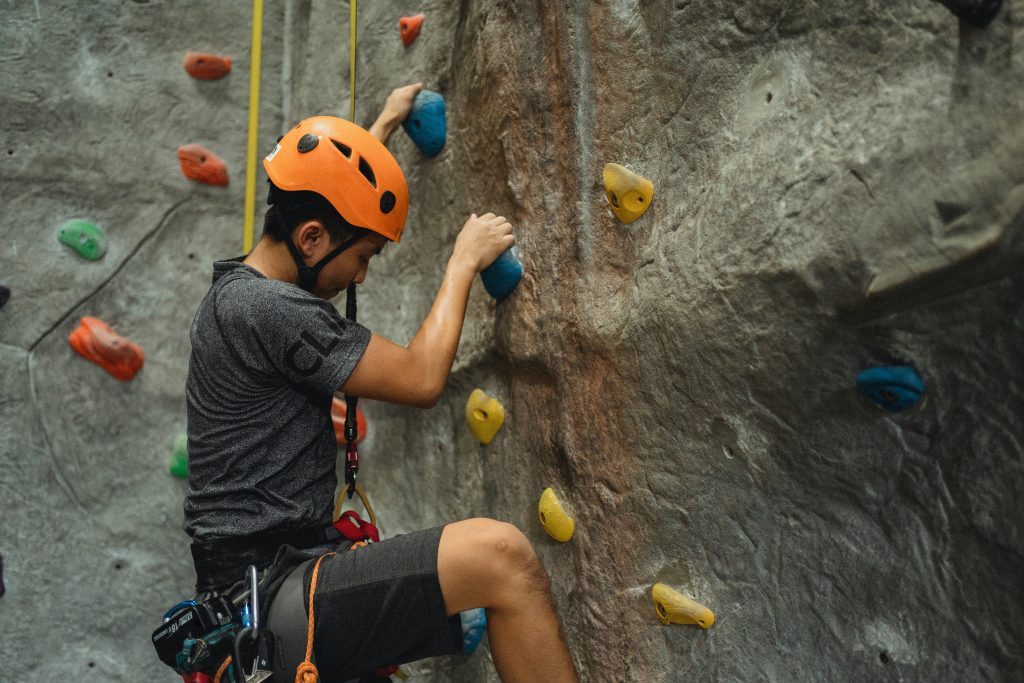
Climbing grades are used to determine how difficult a climb is. The first step in rock climbing is learning how to grade a route. It can be overwhelming at first, but it’s important for climbers to learn how to do this because it helps them understand the level of difficulty involved with each climb. This way, they’ll know what kind of climbing gear will be required for them and their partner.
The easiest way to learn about climbing grades is by reading articles or books on the subject matter. There are many online resources that provide information on grading climbs, You should also talk to other climbers who have been around long enough to know the ropes (pun intended) when it comes to grading climbs properly. These tips will help you get a good grasp on the basics so that you can start climbing safely and confidently today!
5. Use your feet effectively
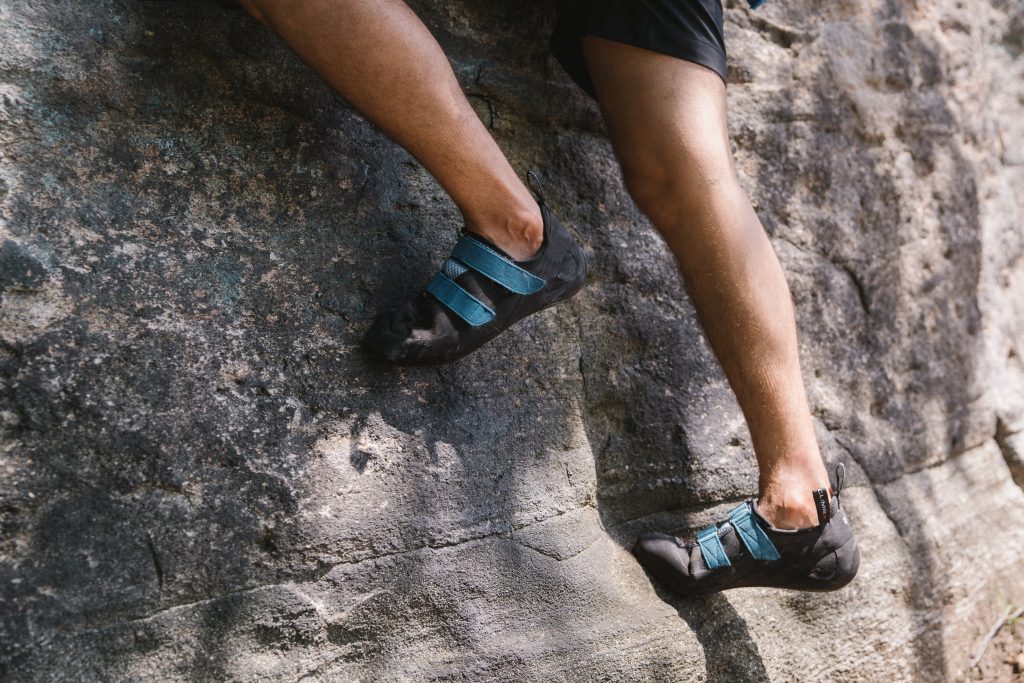
One important thing that every rock climber needs to learn is how to use their feet effectively while climbing so that they can move up easily without using much energy or effort. In order to do this, you should practice using different types of footwork techniques while climbing at home before going out into the wilderness or mountains where there are no walls available for training purposes. Practice these techniques until they become second nature so that you can use them
Improve Your Footwork by Practicing “Silent Feet”.
This is an important technique to learn if you want to climb safely and efficiently. Climbing is all about being light on your feet and moving quickly over the rock surface. The best way to do this is through practicing the ‘silent feet’ method – where you move slowly and deliberately over the rock surface with your full weight supported by your hands only until you have reached a secure position before taking any weight off your hands again. This method requires good balance and strength in your upper body muscles as well as good footwork skills – which comes with practice!
6. Practice both dynamic and static movement.
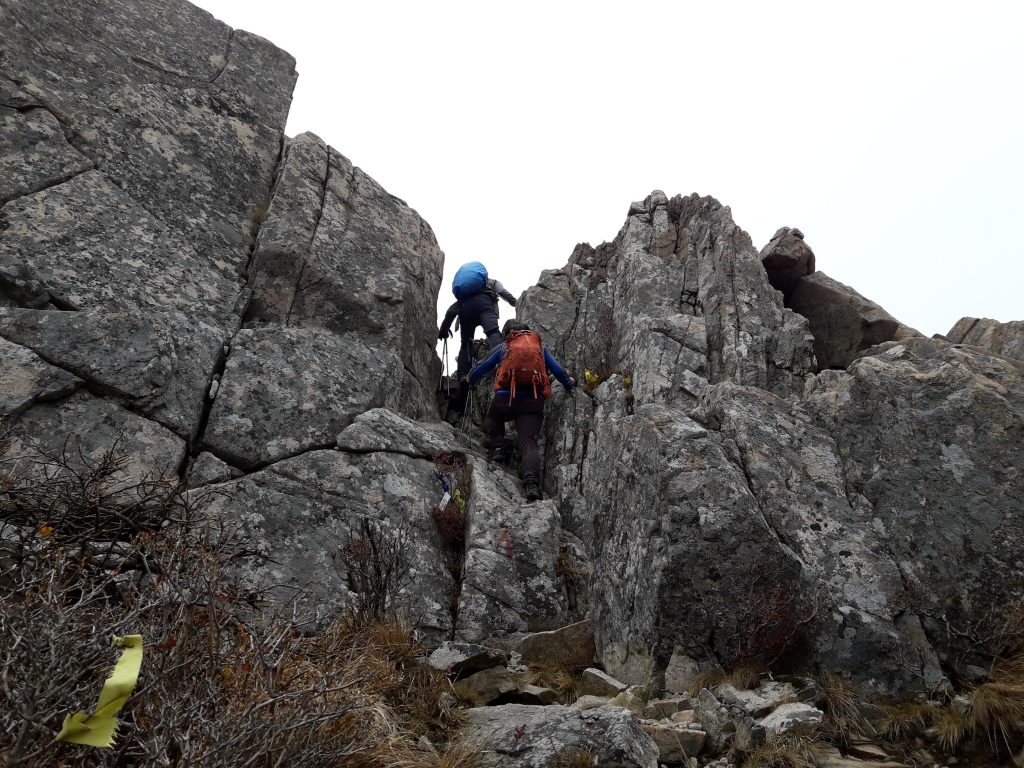
If you’re new to climbing, or if you’re looking for some tips to improve your technique, here are some basic climbing tips for beginners.
When you first start climbing, you may have problems with balance and coordination, but these problems should go away after a few months of practice. If they don’t, then it’s possible that the climbing gym you’re training at is too small and not challenging enough.
When a climber can reach any hold on the wall by simply reaching out and grabbing it, they have mastered the static movement. Dynamic movement requires more skill because the climber has to actively move their body to reach certain holds. This type of movement requires more strength, flexibility, and stamina than static movement does.
If you want to learn how to climb efficiently, then watch other climbers in action before attempting anything yourself. You should focus especially on how their feet move on the wall as this will give you important clues about how to properly use friction against the rock when climbing up or down a route. In addition, pay attention
Climbing requires great body control because you need to spend most of your time hanging on the wall without touching anything else except your feet on footholds or handholds. You must have strong core muscles as well as strong arms so that you can reach far away holds or move dynamically on the wall without falling off easily.
7. Keep Your Arms Straight
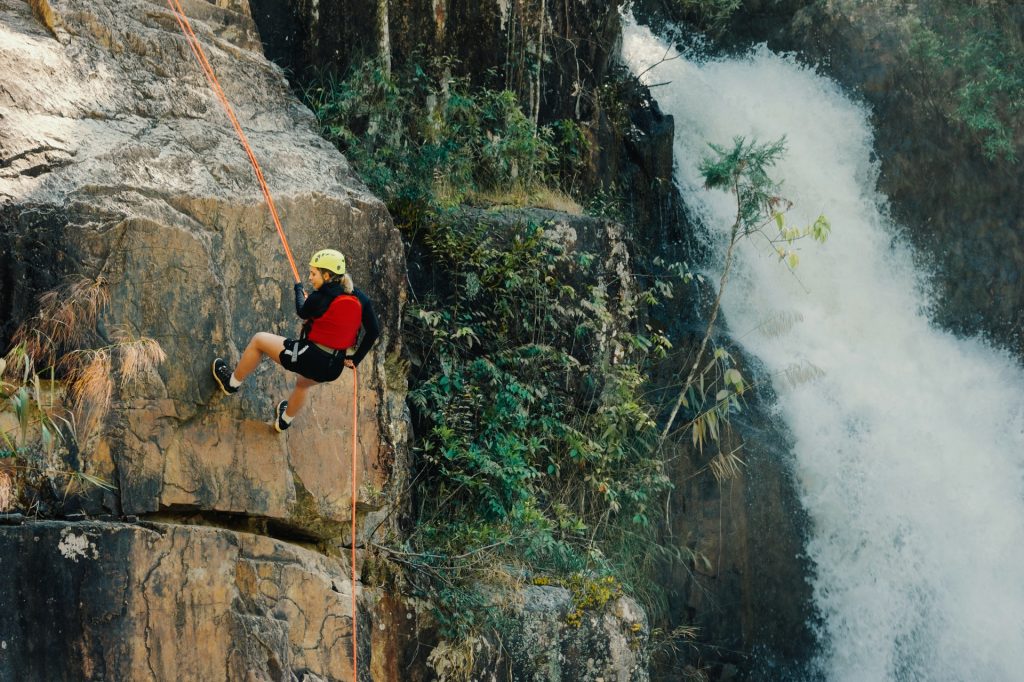
Most important rock climbing tip for beginners: Keep your arms straight! It’s tempting to let your arms bend when you climb so that they are closer to being horizontal with the wall or rock face. This may feel easier initially but it will impact your performance
Most people who have never climbed before will naturally bend their arms when they climb. This is fine if you’re just going up one or two feet, but it can impact your performance when you’re higher up on the wall. Bent arms can impact your performance by restricting your reach and forcing you to use more energy than necessary to pull yourself up.
Your upper body will tire more quickly – as you support your weight with bent arms, you’ll tire more quickly than if you keep them straight and use them more efficiently
Bending your arms restricts your reach – if you keep them straight, then there is more space between them and the rock face which means that you can reach higher up onto ledges or holds
Bent arms restrict freedom of movement – if they are bent then they restrict how much movement is possible between each move
Related: Avoid These 10 Mistakes When Indoor Bouldering
8. Work on your weaknesses
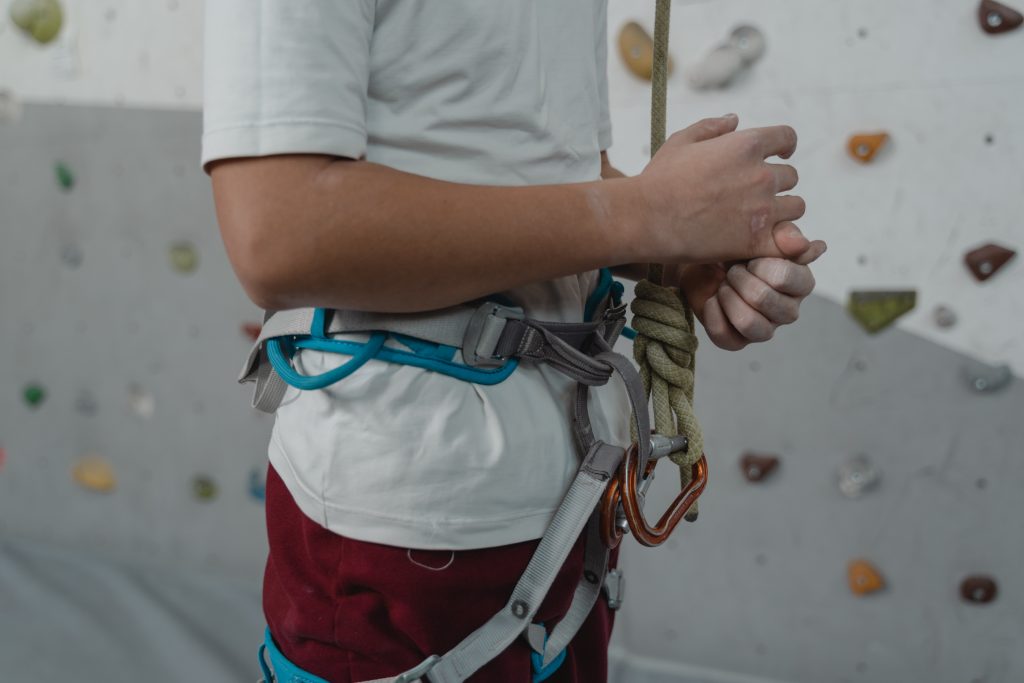
Climbing is all about finding your balance between strength and technique. If you’re strong but lack good technique, try taking some yoga classes or practicing yoga at home. If you have good technique but are weak, try lifting weights or doing calisthenics exercises like pull-ups and push-ups.
If there’s one thing that climbing teaches you, it’s how to overcome your weaknesses. Climbers who are strong in certain areas often have trouble with others because they just don’t use them as much.
The best way to overcome this is to work on those weaknesses while still maintaining the strength of your other skills. For example, if you are strong on crimps but not so good at slopers, then make sure that every climb has some sloper moves so that you can practice them over and over again until they become second nature to you.
9. A basic warm-up routine
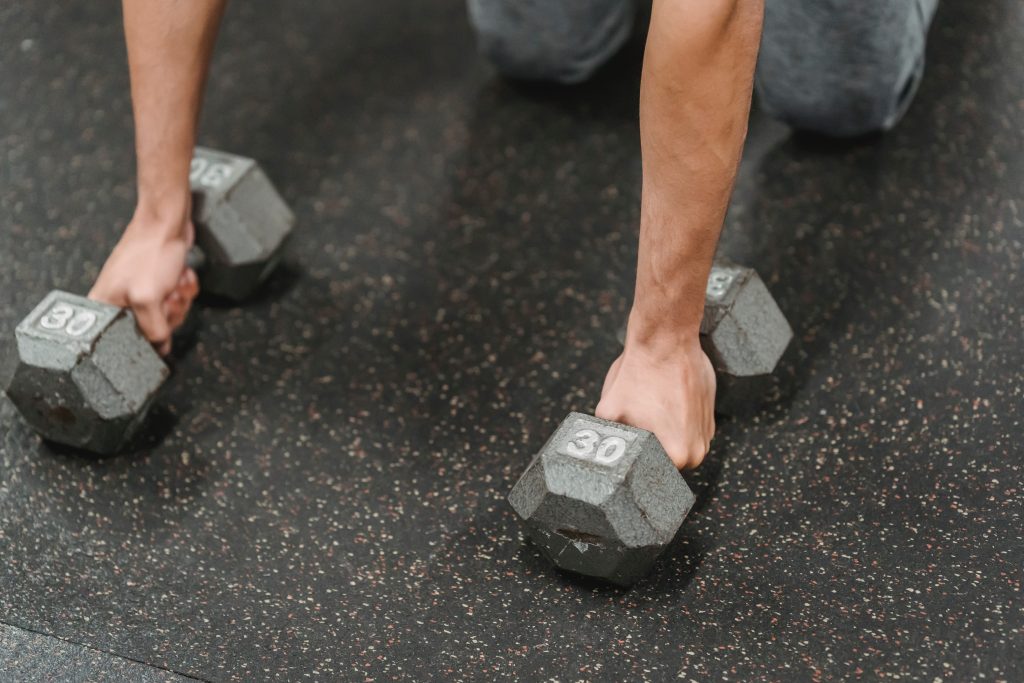
Many climbers skip the warm-up because they’re eager to get started on their project or they feel that it’s not necessary. But warming up is important for your safety and comfort while climbing. A proper warm-up will increase your range of motion, reduce muscle fatigue and increase strength. You’ll also be less likely to injure yourself if you take time to stretch before climbing.
The most important thing is to get warmed up properly. This means more than just a few minutes of easy climbing. You need to make sure your muscles are loose, your heart is pumping, and your body has warmed up enough so that you can focus on climbing.
The most common way to warm up is with dynamic stretching exercises for the major muscle groups in your body (usually arms, legs, and core). Dynamic stretching involves moving through an exercise slowly and deliberately so that your muscles are warmed up before you begin climbing. There are many different types of dynamic stretches: some are better for increasing flexibility while others are designed specifically for improving power or strength
10. Nutrition is important for climbers

Make sure that your diet includes all the nutrients your body needs.
As you might expect, climbing is a very physical sport. It’s also quite intense and can be very stressful on the body, especially if you push yourself too hard or too often.
If you’re going to climb regularly, it’s important to pay attention to what you eat and drink and make sure that your diet includes all the nutrients your body needs.
Carbohydrates are the most important source of energy for rock climbing, so make sure you eat plenty of carbohydrate-rich foods such as oats, rice, and pasta before your session. And don’t forget about protein — it helps muscles recover from exercise.
11. Learn how to fall safely
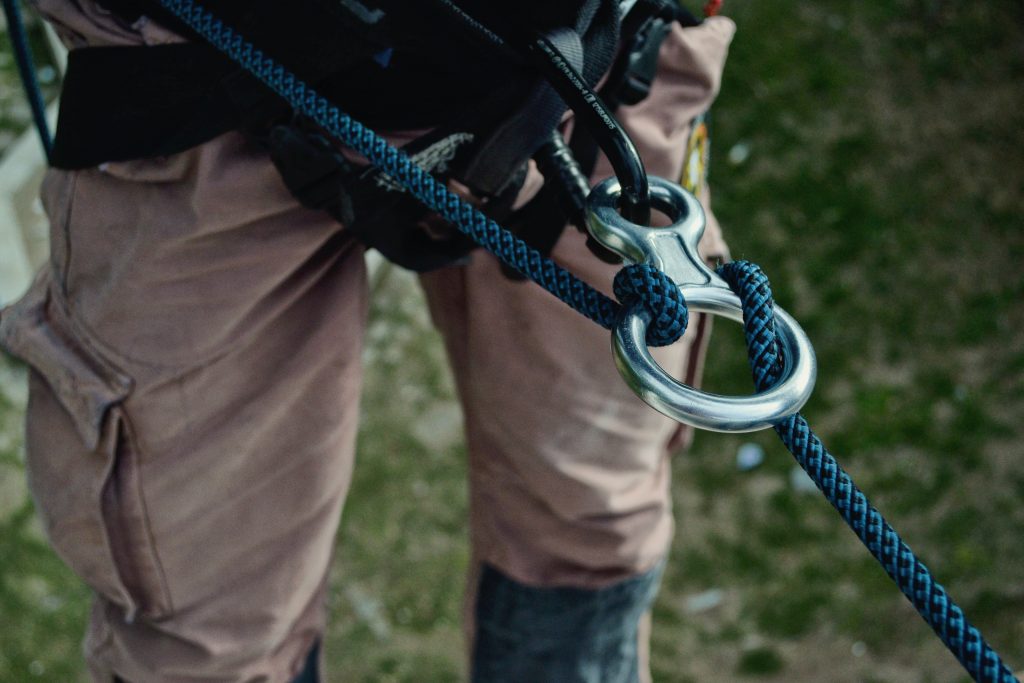
Climbing involves falling so it’s important that you know how to land properly on the ground or on another surface. Practice falling off from different heights so you’ll be able to do it confidently when you’re actually climbing in real life.
The first thing that you need to learn when it comes to climbing is how to fall safely. Falling can be dangerous if not done right but with the right technique, you can prevent yourself from getting injured when falling off the wall. Here are some tips on how to fall safely:
Try not to grab the wall or rope when falling as this could result in severe injuries such as broken fingers or arms, sprained wrists, and other injuries which may lead to long term rehabilitation at home or hospitalization if severe enough
Always protect your head by keeping your chin tucked in so that your head does not hit anything hard when falling off the wall
12. Put a Basic Training Plan in place
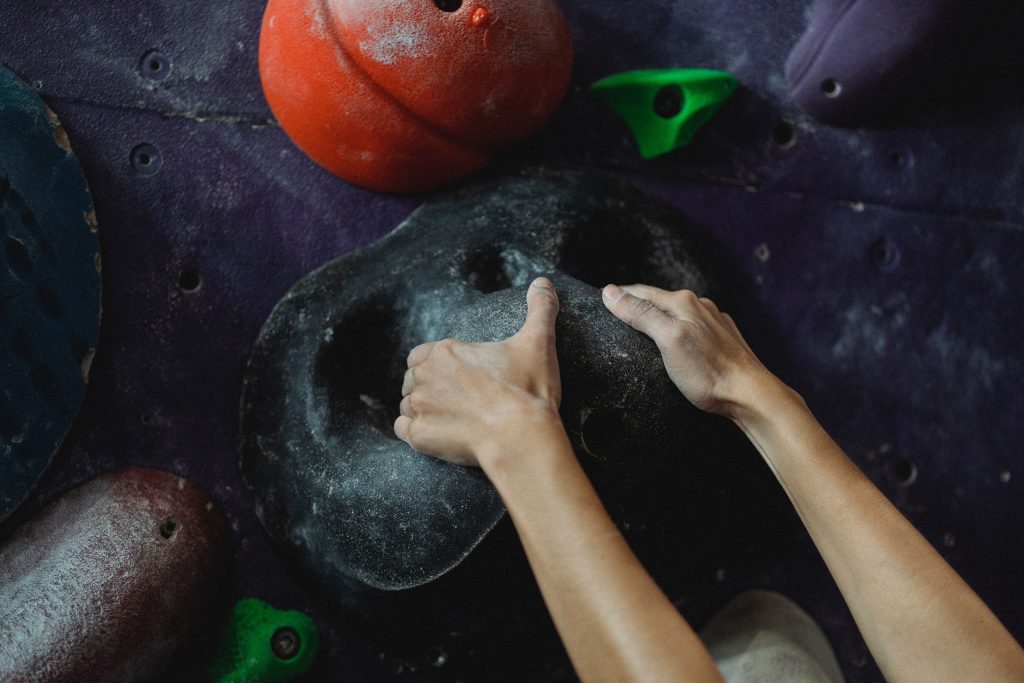
If you’re serious about progressing in rock climbing, it’s important to put a training plan in place.
The key to success with any exercise program is consistency. Rock climbing is no different.
The best way to train for rock climbing is by following the same program consistently. There are many different styles of training programs available, but if you want to get the most out of your training, you need to choose one that works for you.
You might think that climbing isn’t as strenuous as other activities like running or swimming, but think again! Climbing requires upper body strength, endurance, agility, and flexibility—all of which require specific types of training.
Related: Top Rock Climbing Exercises
13. Ask others for advice
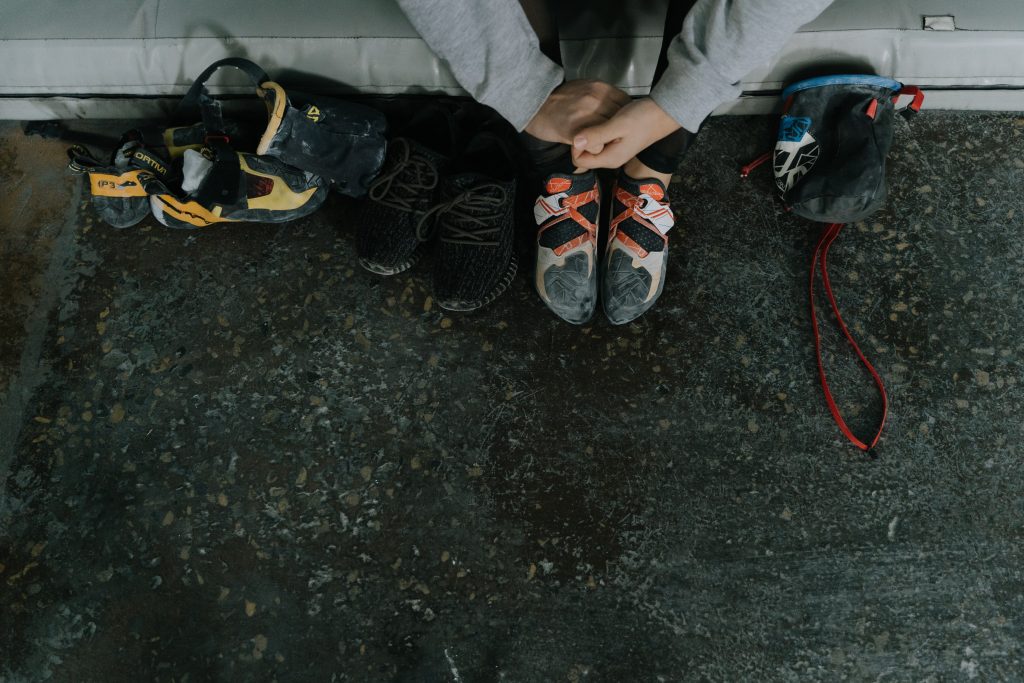
If you’re looking to get started in climbing, don’t be afraid to ask for advice from other climbers. They can tell you about their favorite routes, areas, and techniques for success.
ask others for advice. Whether it’s a friend or relative who’s climbed before or even someone in the gym, there are plenty of people who can help you out. When you’re starting out, don’t be afraid to ask for tips on how to get started or even specific questions about your own experience level and interests. It’s better to ask questions than it is to make mistakes!
Next up, don’t be afraid to take a class. If you have access to one near where you live, take advantage of it! Most gyms offer classes that will introduce you to basic techniques and skills that will help make your experience safer and more enjoyable overall. Classes also give you the chance to meet other climbers — maybe even some who want to go climbing together sometime!
14. Get out and climb.
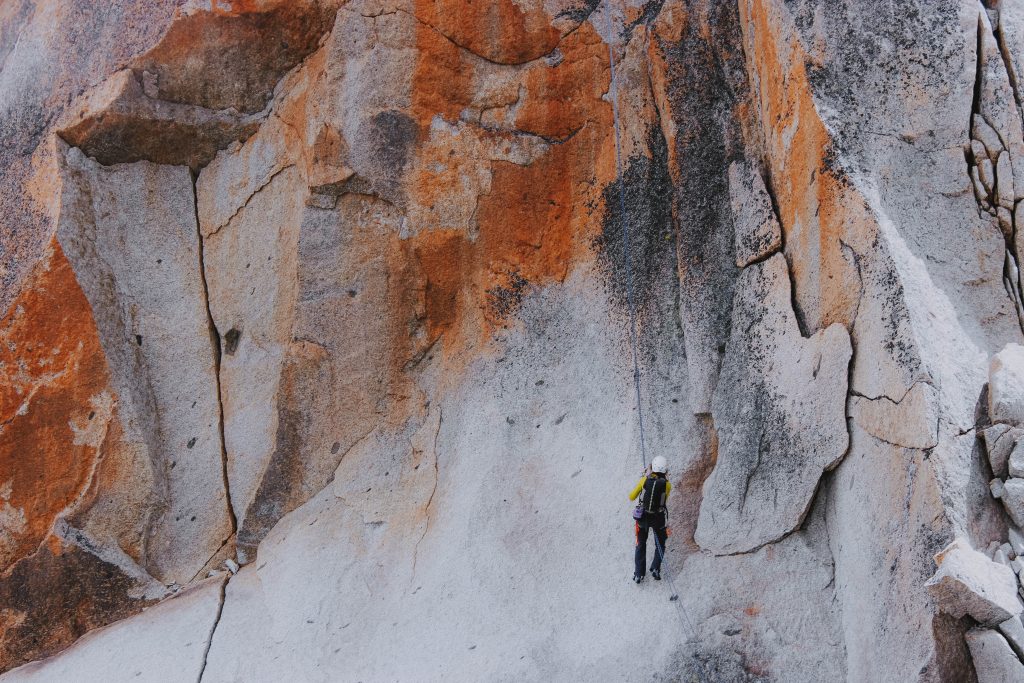
The best way to learn rock climbing is to go out and climb. Whether you’re a total beginner or have been climbing for years, it’s always a good idea to get out and experience the sport as often as possible.
Outdoor climbing offers its own set of challenges and rewards — namely, there’s no limit on how far you can progress your skills because there’s always something new to try. The downside is that outdoor climbing can be dangerous if you don’t know what you’re doing!
If there’s a climbing gym near you, sign up for classes or drop in on a Friday night when they’re open late and try out some of the easier routes. Once you’ve gotten the hang of things at the gym, check out some local outdoor climbing destinations or even try taking some weekend climbing trips with friends or family members who are also interested in learning how to rock climb!
15. Your legs are the most important part
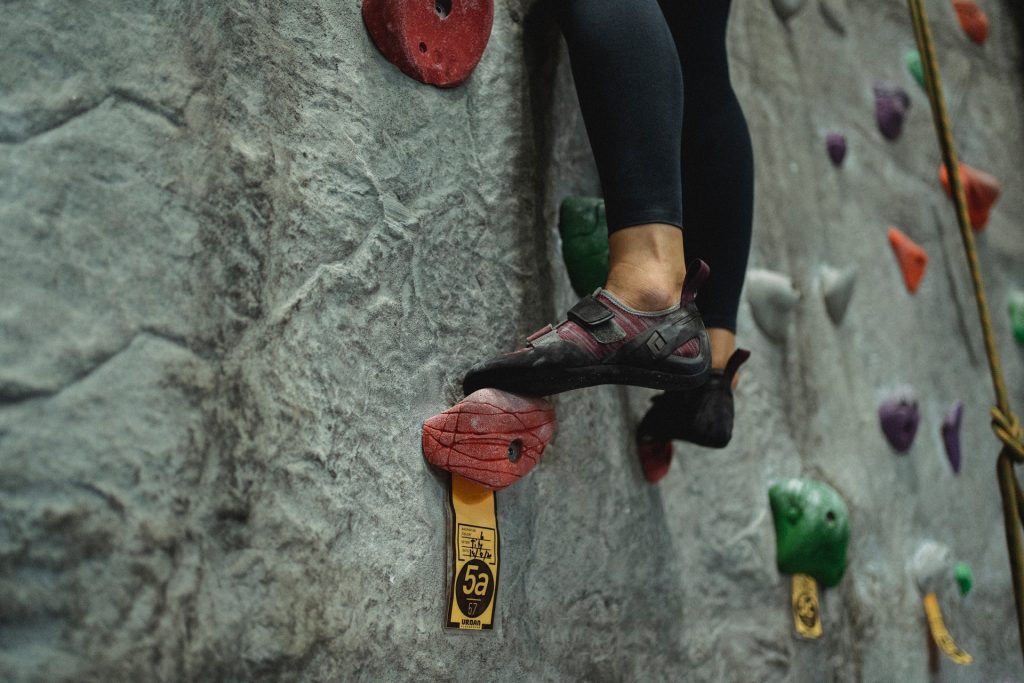
When you climb, your legs are the most important part of your body. They provide most of the power needed to move upwards. You’ll want to take advantage of this fact by engaging your leg muscles when climbing, especially when going up steep walls or moving over large areas where you need to put a lot of force into each step.
Use your feet correctly
To climb efficiently, use a toe-heel approach instead of putting all your weight on one foot at a time. By alternating which foot is on top at any given moment (left toe-heel, right toe-heel), you’ll be able to get more traction from each step and reduce fatigue over time.
Don’t stop!
A common mistake among beginners is stopping too often when climbing which leads to fatigue and falling accidents because they’re not putting their full weight behind each step as they should be doing so they can move upwards more easily without breaking their momentum
16. Chalk is an essential part of rock climbing
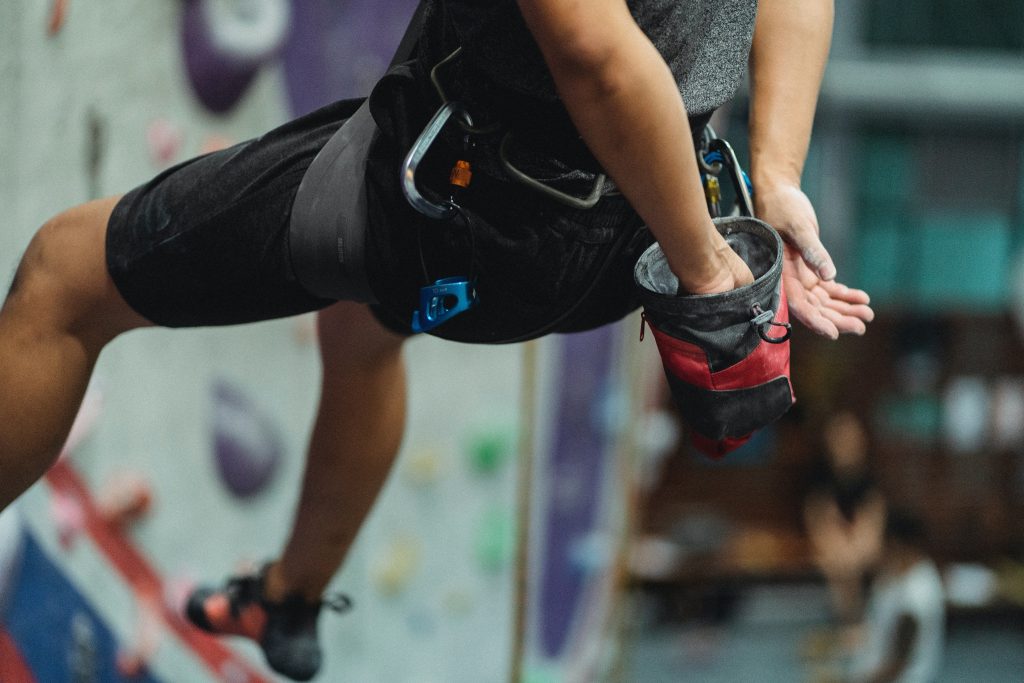
Chalk is an essential part of rock climbing. It helps climbers grip onto the rock surface and prevents their hands from sweating so much that they slip off. Climbers should use chalk frequently throughout their climb, especially when they’re starting at the bottom of a route with lots of friction or when they’re near the top where there is more weight on their hands than usual.
There are different types of chalk that work best for different people based on their skin type and how much moisture they produce when they sweat during exercise like rock climbing.
When you’re ready to climb, take some chalk and sprinkle it onto your hands until they are covered in white powder. Then start climbing! Make sure that you keep your hands dry by wiping them off with a towel if you have one available, or using more chalk throughout your climb if necessary.
Related: Best Climbing Chalk
Related: Best Rock Climbing Chalk Bag
17. Watch Other climbers
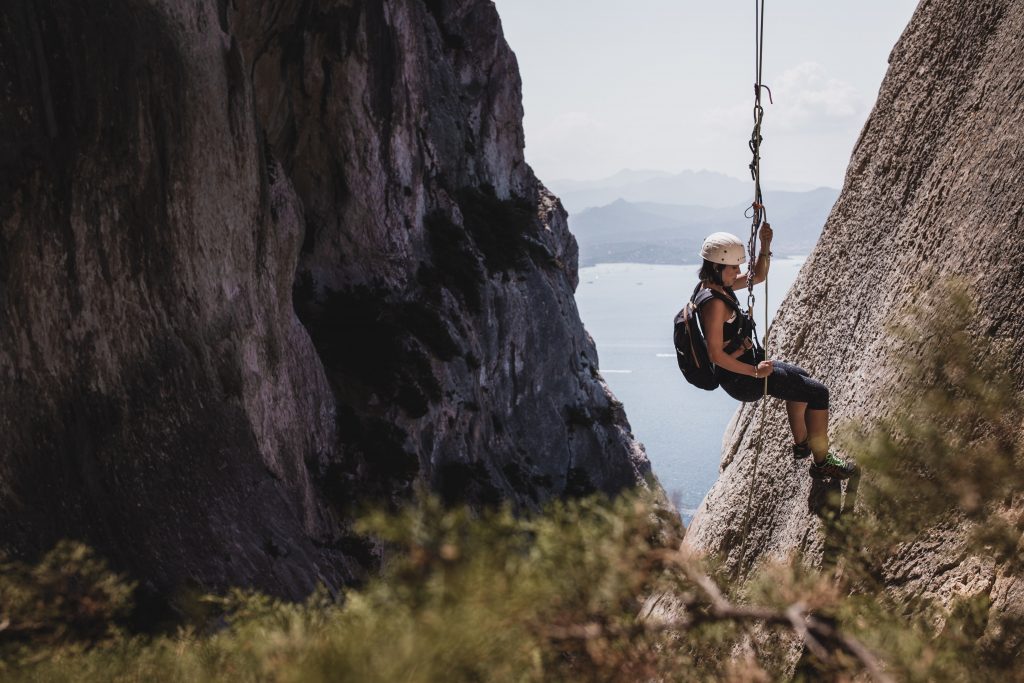
Watch other people climb. You will learn more by watching others than by reading books or going through tutorials carefully. You should keep your eyes open for experienced climbers who can teach you some basic techniques before you try them out yourself.
Watching other people climb is one of the best ways to learn. You can see how they do certain moves, which allows you to improve your skills.
Watching others will help you understand what makes a good climber and what makes a bad climber. If you have the opportunity, try climbing with a more experienced person who knows how to teach others.
If you have the chance, watch others climb before attempting the climb yourself. This will give you an idea of what it will look like before attempting it yourself. It is also important that you know how long it takes for them to complete the climb and how much effort they put into each move.
Watching other climbers gives you an idea of what works and what doesn’t work when climbing a rock face. You can learn from their mistakes and avoid making similar mistakes when climbing on your own or with someone else who may not be as skilled as yourself or the person that taught you how to climb in the first place
18. Resting is just as crucial to climbing
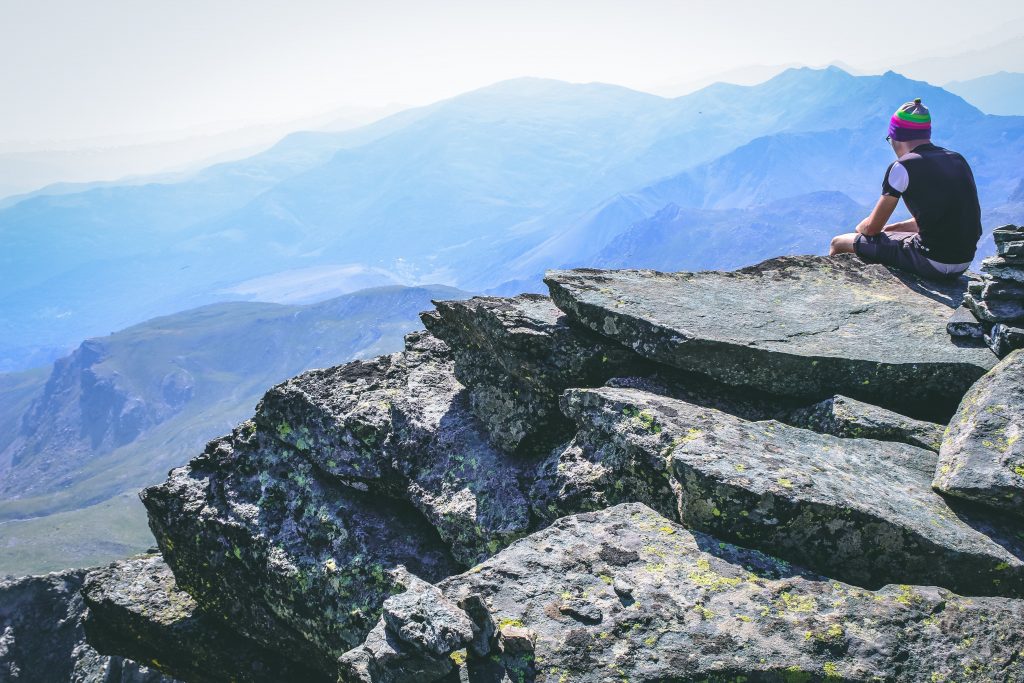
Resting is just as crucial to climbing as it is for any other sport. If you push yourself too hard or climb for too long without a break, it can lead to exhaustion and eventually injury.
Taking breaks allows your muscles to heal, so you can climb stronger for longer periods of time without injury or exhaustion. If you’re going to go hard at something, make sure you take breaks every so often so that you don’t overdo it and injure yourself.
Taking breaks allows your muscles to heal. This is important for any physical activity, but especially so for climbing where you will be using your hands and forearms extensively. Without taking breaks between climbs or routes, climbers can develop “climber’s elbow” or “rock climber’s finger”, which refers to pain in the elbows or fingers caused by overuse. Resting on the route allows you to recover before attempting another climb or route and prevents injury or exhaustion.
Rest Your Wrists During Climbing Sessions
Your wrists are one of the areas most prone to injury during climbing sessions due to their repeated use during climbing activities. Wrist supports can help reduce the risk of injury while increasing comfort during climbing sessions by allowing proper blood flow through hands and wrists while reducing pressure points on hands when gripping hold with your fingers during climbs.
19. Holds
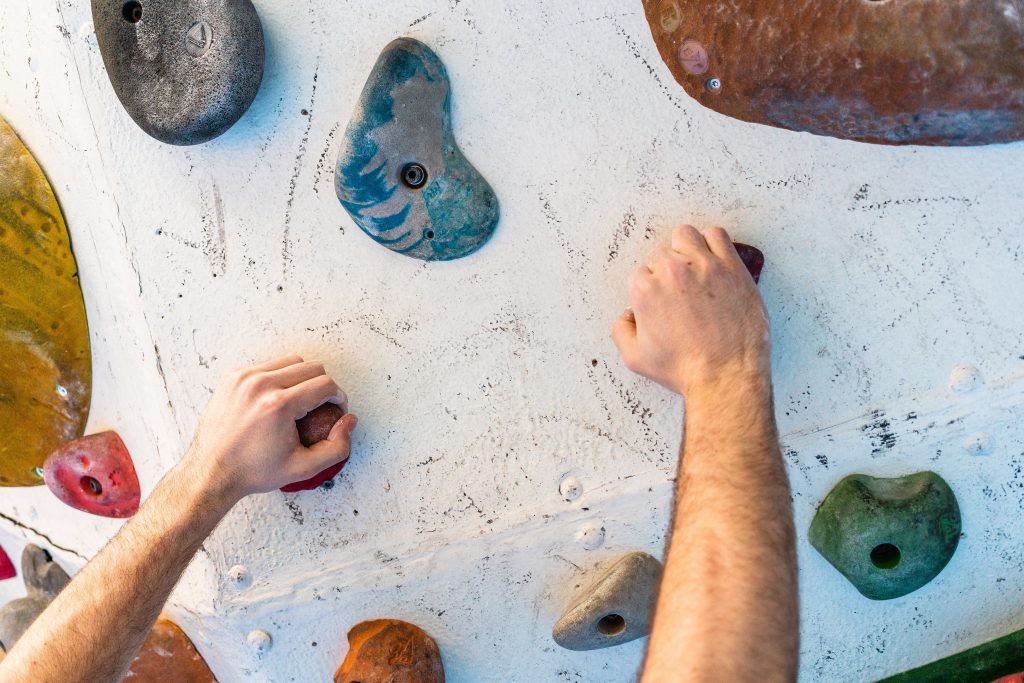
Climbers use their hands to grab onto different areas of the rock they are climbing. Each type of handhold has its own name and is placed in different places on the rock face. For example, a crimper is a small edge that fits into your palm and only allows one finger to fit over it (usually your index finger).
A jug is a large hand hold that can be used as leverage when doing pull-ups or other movements that require strength. Jams refer to cracks in rocks that are good places to put your hands or feet while climbing up steep faces. Slopers are large slabs of rock that are not very good for holding onto but can be used as footholds or stepping stones when moving from one place on the wall to another.
Handholds
When climbing, you use handholds on the rock face to help you ascend. These may be cracks or divots in the rock or even protrusions that can be grasped with your fingers or hands. The main thing to remember when using handholds is that they should only be used for balance — never for pulling yourself up the rock face!
Related: Best Grip Strengtheners for Climbers
20. Rock climbing techniques
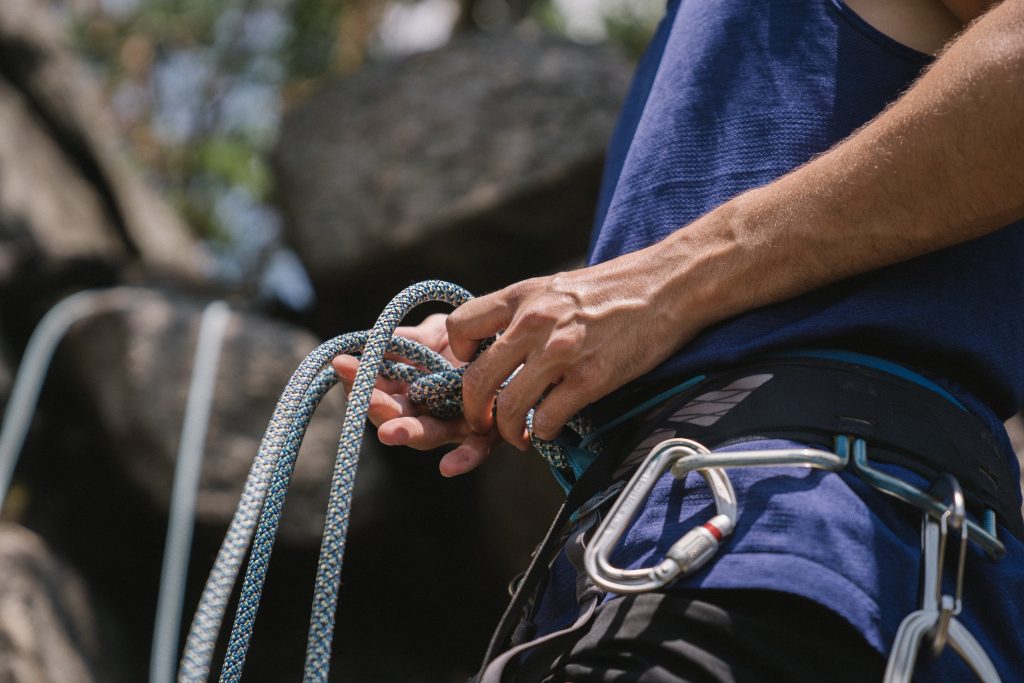
If you want to become a climber, the first thing that you need to do is learn the basic techniques of climbing. The techniques include things like how to tie knots and use a belay device, as well as how to use your body weight appropriately, how to balance, and so on.
Climbing is a skill that requires time and practice. You start by learning how to use your body effectively and efficiently, then you learn how to balance yourself on the rock. You learn how to hold onto the rock in different positions, how much pressure you can exert on hold, and where you should place your feet or hands next.
In climbing, there are also many different techniques for climbing up rocks — depending on whether you are going uphill or downhill, whether you need a stick- or handhold at all times, etc.. It’s important to understand these techniques so that you know what kind of movements work best for any given situation.
You will learn these techniques by either taking classes or reading books about climbing. If you have access to a climbing gym, this is an excellent place to start learning how to climb because it gives you hands-on experience with the equipment and allows you to see what it takes to get up the wall safely.
The most important aspect of rock climbing is balance.
You need to be able to find your center of gravity and stay balanced while climbing. This will help you avoid falling off the wall or losing your grip on the rope when you’re climbing up or down.
Flexibility is also important for rock climbers because it allows them to reach higher locations on the wall and get into positions where they can get better leverage for climbing. This can also help prevent injuries from over-extending yourself when you’re reaching for something further away from your body than normal.
Strength is another important aspect of rock climbing because it will allow you to hold onto holds longer than someone who isn’t as strong would be able to do so. Strength will also help you pull yourself up higher on the wall if there are no footholds available that are within easy reach of your feet.
Breathing is also an important part of rock climbing because it helps regulate your heart rate so that it doesn’t get too high while you’re performing these activities
21. Double-check before you start climbing
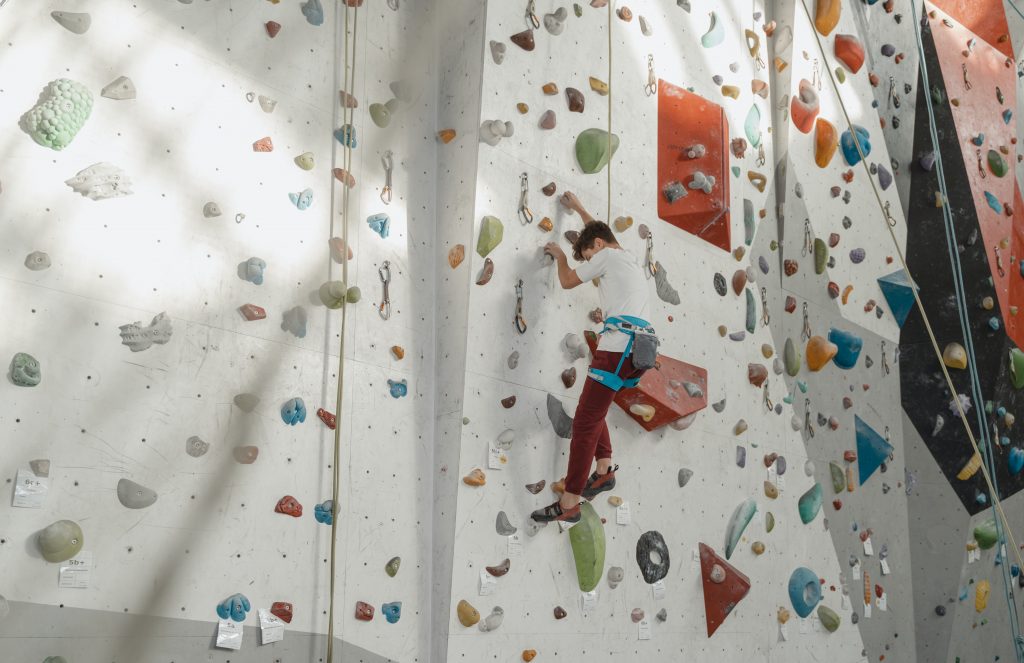
Double-check before you climb. Always make sure your harness is secure and that all the buckles are locked. Check to make sure that your carabiners are clipped onto the correct rope or safety line, and check for any frayed ropes or worn carabiners before starting to climb.
Before beginning each new climb, visualize what will happen if something goes wrong — like if you slip off hold or drop your gear. Picture yourself falling and how you would react in that situation so that when it happens in real life, your body will react automatically instead of giving into a panic.
Know when to stop climbing. If anything feels wrong while climbing — even if it seems minor at first — stop immediately and descend as quickly as possible. This will reduce the risk of injury
22. Make Climbing a Routine
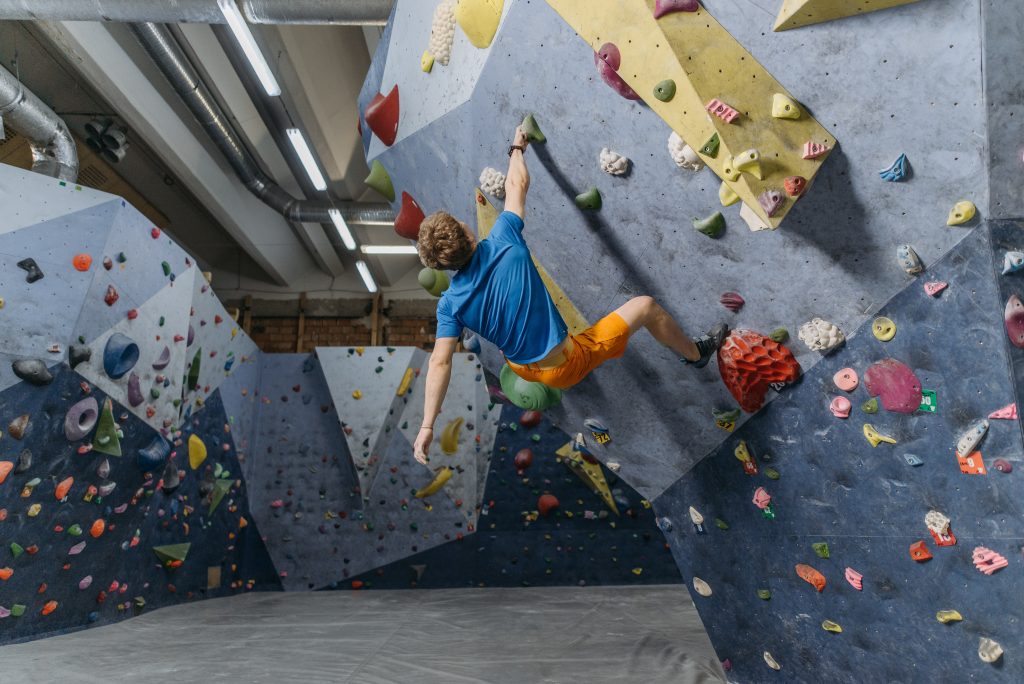
The first step in becoming a better climber is making it part of your lifestyle. Instead of going out once in a while for a day trip, make it a regular activity. If possible, try taking your friends along with you so that you can share experiences and learn from one another as well as help each other out when needed.
23. Getting started with the easiest

Climbing has a learning curve, just like any other sport or activity. If you try to jump right into it without learning the basics first, it could be dangerous and even cause injury. Start off with small boulders and work your way up in difficulty as you gain experience and confidence. That way, if you do get injured, it won’t be too bad and won’t set you back too much.
24. Learn How To Belay
Belaying is the act of securing someone else while they climb, making sure they don’t fall or get injured during their ascent. It can also be used as a verb for securing yourself while climbing as well! The person who is being belayed will clip their rope into an anchor point (called an anchor) at the top of a route so
25. join a climbing community
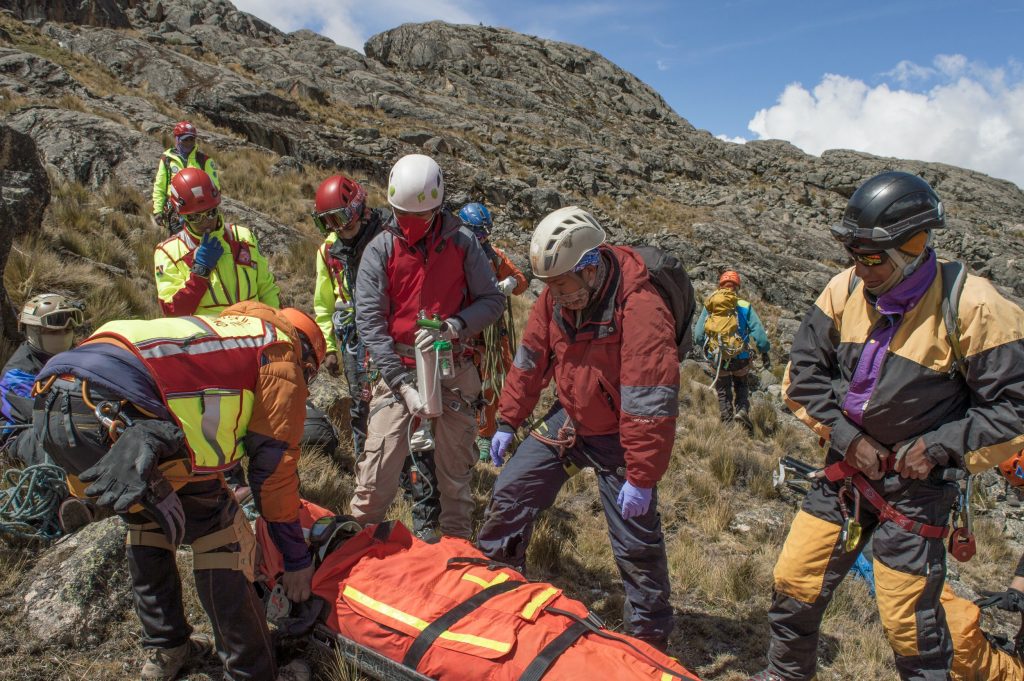
The first thing you need to do is join a climbing community. This will help you learn about the sport, meet other climbers and find out more about safety precautions. There are many organizations that provide training and certification courses for climbers at different levels. The best part about joining such organizations is that they also offer free or discounted rates on equipment and facilities. You can also attend group classes for ropes courses or rappelling if you want to learn how to climb safely with others.
26. Learn the terminology of climbing
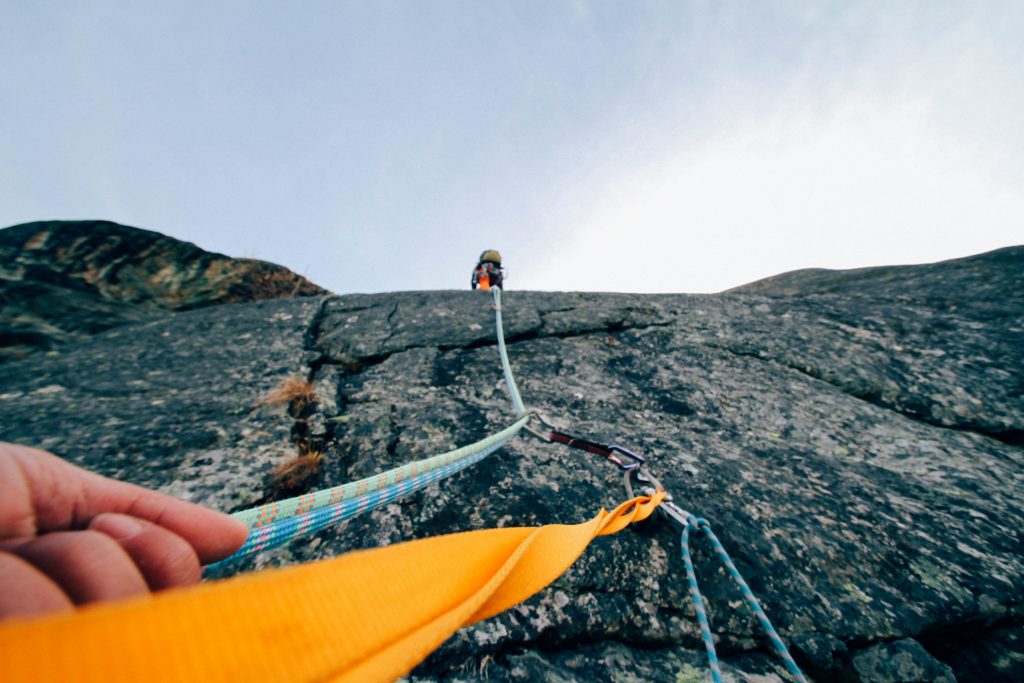
Learning about rock climbing is a great way to get ready for your first climb. Rock climbing is a complex sport that requires specialized equipment and techniques.
Learning the terminology is an important part of becoming a climber. If you don’t know what you’re doing, it’s easy to get injured or killed.
Learn the language of climbing. This will help you understand what your instructor is telling you during lessons and how best to describe things yourself when talking with friends and other climbers.
also will help you make sense of what your partner is saying when they’re at the top of the cliff. If you’re not sure what these terms mean.
27. Know Your Belay Devices
The most important piece of hardware for climbers is their belay device. This is the piece of equipment that secures the rope to the harness and attaches to the climber’s harness. There are many different types of belay devices, but they all serve the same purpose: they allow another climber to safely belay you while you climb. When used correctly, a belay device will help keep you safe if you fall or slip off a rock face.
The two main types of belay devices are figure 8 and the auto-locking belay device (ALBD). The ALBD is more advanced because it locks automatically when weighted. This is important when belaying multiple climbers as it allows one belayer to manage multiple ropes simultaneously. Both types work by attaching directly to the harness with a locking carabiner. You can buy them ready-made or make your own out of scrap webbing or webbing tape if you want to save money.
28. Attach Yourself Properly
Even though climbing doesn’t require much weight on your harness, you need to attach yourself properly so that if you fall, your body will not swing into another climber or object. This can cause injury if another person is struck by you or by objects such as rocks or trees that may fly off during a fall. Attach yourself using two locking carabiners on each side of your harness’s waist belt, one above and one below where your waistbelt meets your leg loops
29. Try everything and different styles
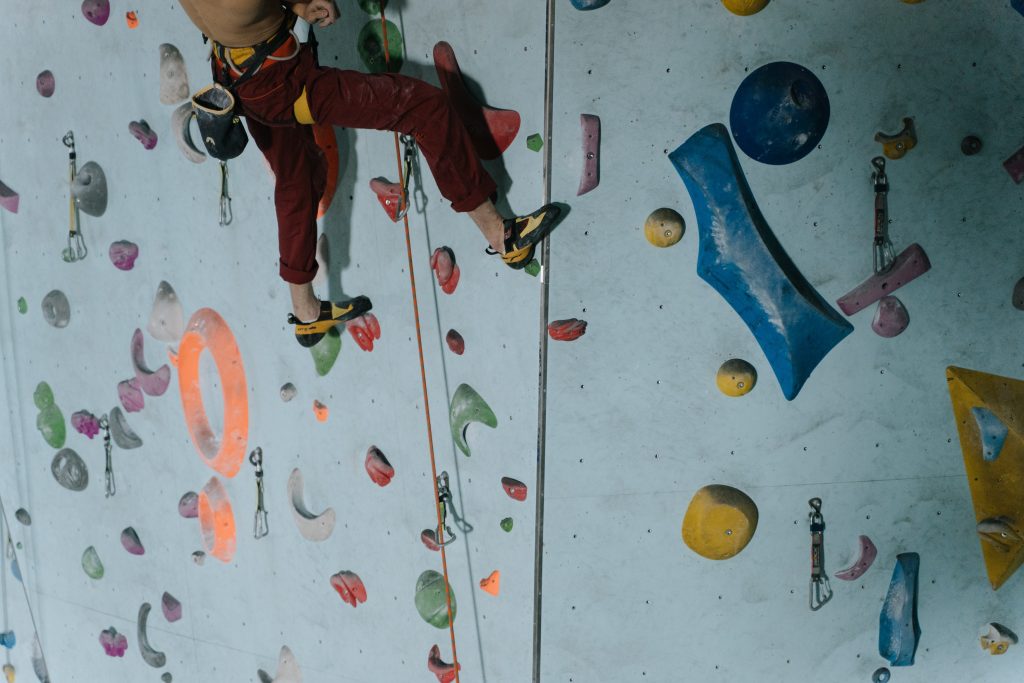
Don’t be afraid to try harder climbs first. Beginners should try all kinds of climbs from easy ones to more challenging ones so they can learn about different types of climbing and improve their skills. If you don’t try something that seems too hard for you at first, you may never know if you could have done it!
Try more than once
If your first attempt at climbing doesn’t go well or even if it does, try again! Climbing is not an exact science; there are many factors that affect how well someone climbs such as strength and flexibility. Even though one climber may climb faster than another person on the same route, this doesn’t mean he/she will always do better than that person on other routes. In fact, the opposite could happen because each climb has its own unique features which may favor one climber over another
Climb a lot
The best way to learn rock climbing is simply by climbing. You’ll learn more by practicing and getting good at it than you will read about it or watching videos. Don’t be afraid to try things that seem too hard — that’s how we learn!
30. Get a guidebook.
This will give you an idea of what routes are available and where they are located. It’s also good for learning about the different types of gear used in rock climbing, as well as safety tips and techniques. The type of guidebook depends on what type of rock climbing you want to do (top-rope or lead) and what area you’ll be climbing at (local crags or national parks).
31. Hangboarding
Hangboarding is one of the most effective ways for beginners to gain strength for other types of rock climbing. This is because it requires you to use every muscle in your body as you try to pull yourself up the wall.
It also helps improve your grip strength, which is important when attempting hard climbs that require using small holds near the top of the cliff or wall (known as overhangs).
This type of training can be done at home with equipment designed specifically for this purpose and no ropes required. You can also do it at local gyms or climbing walls if they have this type of equipment available (most do).
Related: Best Climbing hang boards
32. Learn to lead.
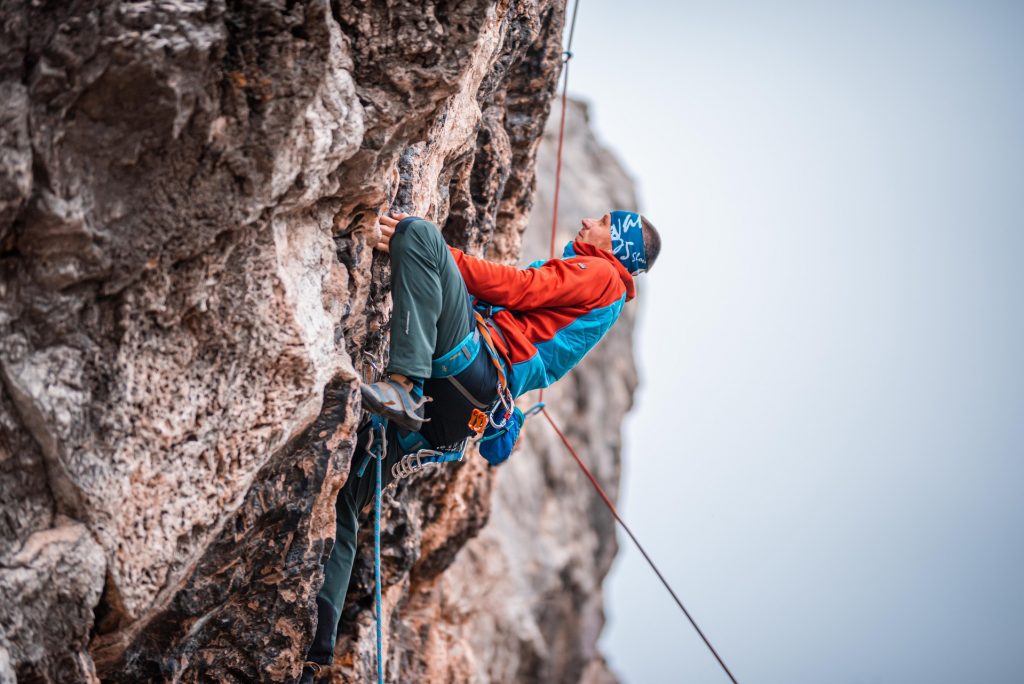
Learning to lead is a critical skill for any aspiring rock climber. To be able to lead climb, you need to be comfortable taking your own gear (including an extra carabiner, and a locking carabiner) and clipping it on the bolts that are bolted into the rock.
If you want to learn how to lead a climb, there are several different ways you can go about it. The first way is by going out with a friend who already knows how and learning from them. This is a great idea because it gives you someone else to watch out for you while they teach you how it’s done. It’s also good because they will let you know if there were any mistakes that were made during your climb so that next time you can avoid them.
The second way is by taking classes at a climbing gym or outdoor center. These classes are usually taught by someone who has been doing this kind of thing for years and knows what they are talking about when teaching others how to do it correctly.
33. Don’t always climb at your max
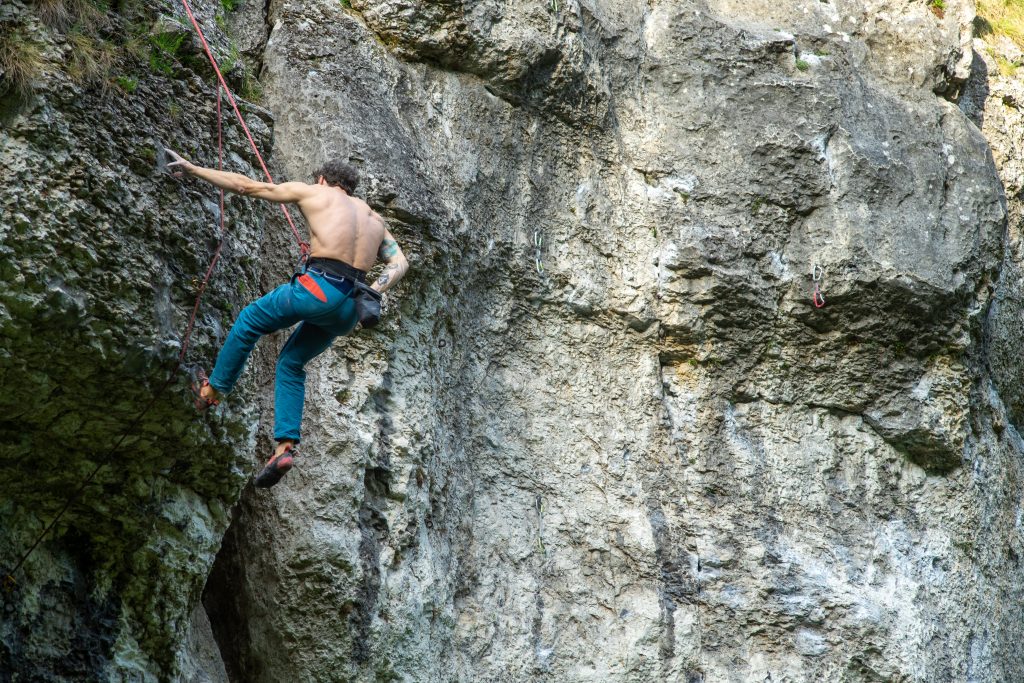
Know your limits and climb within them. If you’re not comfortable with a particular section of the wall, don’t force yourself to keep going just because someone else wants to keep going. Turn around and find another route that suits your abilities instead of trying out something beyond what’s comfortable for you.
34. You have to pay attention to the weather.
Climbing requires a lot of physical exertion and concentration, which means that you’ll need all your wits about you when it comes time to climb the wall. If there’s any chance of rain or windy conditions during your climb, then it’s best not to go up at all. Even a small amount of precipitation can make rocks slippery and dangerous.
35. Don’t try anything too difficult right away
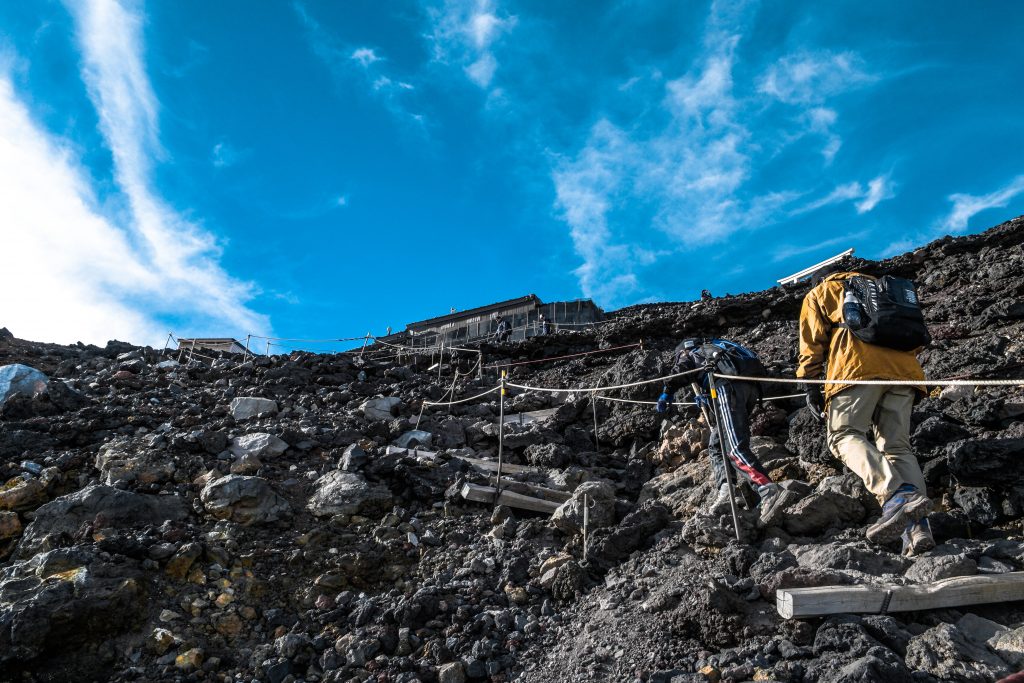
It might seem like a great idea at first glance, but don’t try out any routes that look too hard for your level until you’ve had plenty of practice with easier ones first! Climbing is physically demanding enough as it is — don’t add unnecessary stress onto yourself by trying something too hard right away.
36. Take lessons if possible.
Climbing lessons are available at most indoor climbing gyms and outdoor cliffs. These lessons will help teach basic techniques such as how to tie knots, belay another climber safely, and how build anchors on the wall so that multiple climbers can climb simultaneously without interfering with each other’s gear.
37. Having fun will make you a stronger climber.
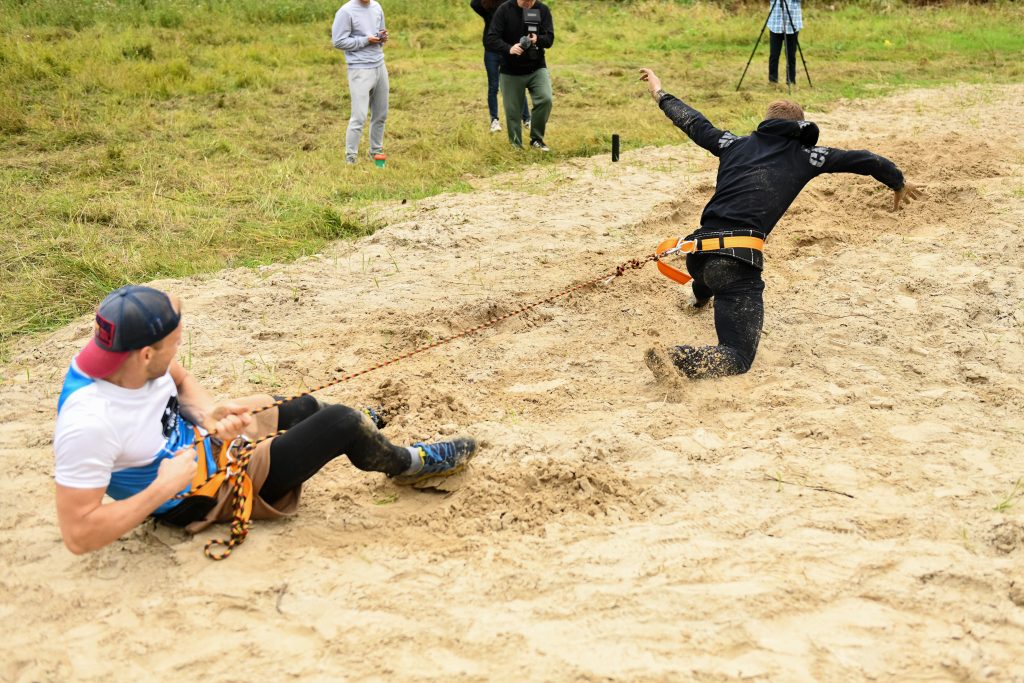
Climbing is a great sport because it’s not only fun but also challenging. The best part is that there are no age limits to climbing. From toddlers to seniors, everyone can enjoy this sport and get into shape at the same time.
Having fun will make you a stronger climber. If you enjoy what you’re doing, you’ll practice more often and become better faster.
Climbing is supposed to be fun! Don’t expect yourself to be able to climb like a pro right away. It takes time and practice before you get good at it. If you’re having fun during your first climbs then chances are you’ll want to continue doing it!
Conclusion:
Actually, it’s quite easy to do climbing. Just grab all the necessary gear, find the right location, follow these beginner climbing tips, exercise these rules, and get ready to be the best climber in your town.
I hope you have learned a lot from this article, rock climbing is one of the best hobbies you can have, don’t let your fear or inability to climb stop you from doing what you love.










Discussion about this post